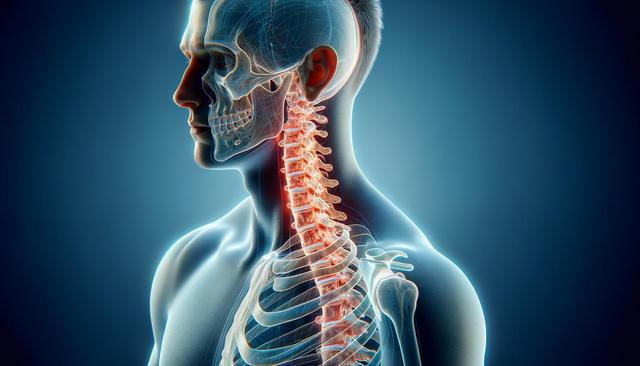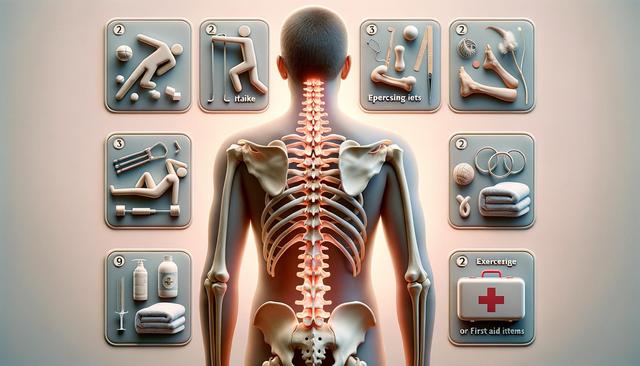What Are Cervicogenic Symptoms?
Cervicogenic symptoms refer to a set of physical issues that originate in the cervical spine (neck area), but often manifest as pain or discomfort in other regions such as the head, shoulders, or even the arms. This condition is commonly linked to underlying problems in the cervical vertebrae, such as joint dysfunction, nerve irritation, or muscle strain. Cervicogenic symptoms are often misdiagnosed due to their similarity with other disorders like migraines or tension headaches, which is why understanding their unique characteristics is crucial.
The most typical cervicogenic symptom is a headache that starts in the neck and radiates toward the front of the head. This type of pain is usually one-sided and may be accompanied by stiffness or reduced range of motion in the neck. These symptoms are not caused by issues within the brain itself but rather by dysfunctions in the neck that refer pain to the head. Other signs may include:
- Soreness or stiffness in the neck
- Restricted neck movement
- Pain in the shoulder or upper back
- Visual disturbances or dizziness in some cases
Common Causes of Cervicogenic Symptoms
Several factors can contribute to the development of cervicogenic symptoms. Most commonly, they arise from musculoskeletal issues in the cervical spine. These can be the result of trauma, such as whiplash from a car accident, or long-term strain due to poor posture, especially in people who work long hours at a desk or computer. Age-related degenerative changes in the spine, like arthritis or disc degeneration, can also be contributing factors.
Other potential causes include:
- Repetitive motion injuries from sports or occupational activities
- Previous neck surgery or spinal abnormalities
- Stress-induced muscle tension
- Inflammatory conditions affecting the cervical joints
Understanding the underlying cause is essential for effective treatment. A healthcare provider may use physical exams, imaging studies, and patient history to determine whether the cervical spine is the root of the symptoms.
How Cervicogenic Symptoms Are Diagnosed
Diagnosing cervicogenic symptoms can be challenging because the pain is often referred, meaning it is felt in a different part of the body than where it originates. Medical professionals typically start with a detailed patient history and physical examination to assess posture, movement limitations, and areas of sensitivity or pain. Specific diagnostic tools may also be employed, including:
- X-rays to check for structural issues in the cervical spine
- CT or MRI scans to identify soft tissue or nerve involvement
- Diagnostic nerve blocks to confirm the source of pain
It’s important to rule out other potential causes of head and neck pain, such as migraines, tension headaches, or temporomandibular joint disorders. An accurate diagnosis is vital for developing a targeted treatment plan that addresses the root cause rather than just the symptoms.
Treatment Options for Cervicogenic Symptoms
The treatment of cervicogenic symptoms typically involves a multidisciplinary approach that may include physical therapy, medication, and lifestyle adjustments. Physical therapy is often the cornerstone of treatment, focusing on strengthening neck muscles, improving posture, and enhancing range of motion. Manual therapy techniques, such as spinal manipulation or mobilization, may also be beneficial in reducing symptoms.
Other treatment options include:
- Over-the-counter or prescription pain relievers
- Muscle relaxants to ease tension and spasms
- Trigger point injections or nerve blocks in some cases
- Ergonomic adjustments at work or home to reduce strain
In rare cases where conservative treatments fail, surgical intervention may be considered, especially if there is evidence of nerve compression or severe joint degeneration. However, this is generally viewed as a last resort.
Preventing and Managing Recurrence
Effective management of cervicogenic symptoms doesn’t end with initial treatment—it also involves taking preventive steps to avoid future issues. For many individuals, this means making changes in daily habits and work environments. Proper posture, especially while sitting or using electronic devices, can significantly reduce strain on the cervical spine. Regular exercise, particularly routines that strengthen the neck and upper back, can also be protective.
Key preventive strategies include:
- Taking frequent breaks during prolonged sitting or screen time
- Using ergonomic furniture and proper monitor height
- Practicing stress management techniques to reduce muscle tension
- Maintaining a healthy weight to reduce spinal load
For those who have experienced cervicogenic symptoms in the past, ongoing physical therapy and periodic medical check-ins may help catch early signs of recurrence. Education and awareness are essential tools in long-term management and can empower individuals to take control of their neck health.
Conclusion
Cervicogenic symptoms can be disruptive and confusing due to their overlap with more common conditions like tension headaches or migraines. However, with the right diagnosis and a comprehensive treatment plan, these symptoms can be effectively managed. By understanding the causes, recognizing the signs, and implementing preventive strategies, individuals can reduce the impact of cervicogenic symptoms on their daily lives. Whether you’re dealing with persistent neck discomfort or unexplained headaches, seeking professional evaluation is the first step toward relief and better spinal health.


